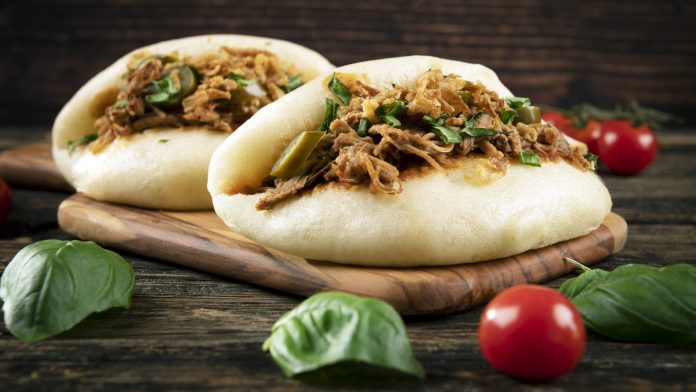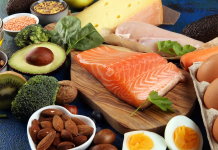Although the word “bao” may not be familiar to you, you have probably seen these soft buns in Chinese and other Asian-inspired markets and restaurants. It is a popular street-food dish, a go-to breakfast treat, a simple lunch or dinner choice, and a fantastic party food. Fine-dining menus in Asia, Europe, and other regions are starting to feature bao more and more.
Bao is essentially a soft, fluffy dough that is steamed with a variety of fillings inside. It is also referred to as steamed buns, baozi, or humbow. It is typically served open-faced as a “gua boa,” which is a flat, lotus-leaf-style bun that folds over the filling, but it can also be served as a traditional doughy closed bun wrapped around the filling and pinched at the top. Taiwanese street food staples like this one are common.
Bao is not at all like Asian dumplings, despite the fact that they are prepared and have a different texture. Bao dough is made with yeast, which gives it a consistency closer to bread than dumpling dough. It also makes the dough somewhat sweeter, larger, and more filling-holding. Instead of being boiled or pan-fried, the round bao bun is cooked with steam, which produces a soft, uniformly cooked outside.
Bao varieties, fillings, and folding techniques
The savory flavor of bao fillings counteracts the sweetness of the bao dough. One of the most popular ingredients inside the fluffy buns is pork; it’s usually barbecue-style pork but occasionally pork belly, which is what’s served on menus as cha siu bao. Tangbaozi is a special kind of bao that is filled with soup and is eaten with a straw to drink the broth before the bun is consumed. But other bao aficionados recommend cracking open the top and slurping the soup with a spoon similar to one used for ramen. Doushabao, a vegetarian take on bao, has a bean paste filling made from navy, soy, mung, azuki, or other comparable bean varieties. Additional bao favorites include coconut and egg jam or sweet custard.
The dough-forming method has changed into a smoother, more approachable version as bao gains popularity. However, creating the authentic, traditional bao requires true culinary artistry, with pleats that swirl and peak at the top of the bun. With the filling in the center, the rounded dough is pulled upward at its edges, and the dough is pleated and folded around the entire circumference. The edible artwork is pinched together at the top in the grand finale before steaming.
Bao origin stories and devotees
Similar to many culinary arts, particularly in ancient nations like China, the history of bao is largely oral tradition with only sporadic written records. Some credit Zhuge Liang, a military strategist from Northern China in the third century, with creating the bao.
According to legend, there is a river and enormous dough balls shaped like human heads that are used to trick enemy soldiers.
Mantou, a term still in use today to refer to steamed buns without fillings, was once used to refer to bao. The name bao, which means “to wrap” in Mandarin, eventually came to refer to the filling of a mantou with either sweet or savory meats and vegetables.
A much more recent history of bao centers on xiaolongbao, also frequently spelled xiao long bao, which is a combination of meats and a broth made by adding aspic, a jelly-like meat stock. According to one version of the story, Mongols traveling the Silk Road carrying xiaolongbaos in the khinkali style are depicted, while another gives credit to a resourceful 1800s restaurateur. That being said, in 2006 the Shanghai government listed these little gems as protected national treasures.
In the United States, fans of the rapidly growing Taiwanese restaurant chain Din Tai Fung consider xiao long bao to be something they should really crave. A small army of chefs in white uniforms with masks performed a bao creation show for the long lines of hungry diners waiting to be seated. The chefs were hidden behind glass windows.



























